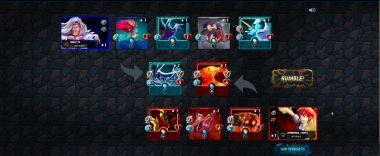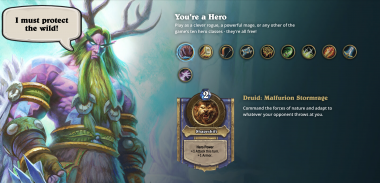2020 was a year like no other. The coronavirus took its toll on virtually every area of the world. However, crypto investors will remember 2020 for an entirely different reason. It was a year that witnessed an unprecedented boom in the NFT market.
By May of 2021, NFT saw mainstream press coverage, which is the best sign that the phenomenon was noticed. NFT transactions can now be worth tens of millions of dollars. But how has this frenzy even started?
Before Ethereum
The emergence of every significant phenomenon has a timestamp; A moment in time from which events take a straight path. Before that point, it’s often the case that different people work on similar projects simultaneously in different parts of the world.
The NFT market is no different. The milestone in its history is undoubtedly the emergence of Ethereum. This event set a standard for the NFT market, making it possible to gain public interest. Before we discuss those well agreed-upon timeline, let’s dive into what was happening before the term NFT was born.
Namecoin – the First Altcoin
Back in 2011, the only cryptocurrency was Bitcoin, and it was only there for two years. Yet, some people already saw the potential in it as well as the limitations. Some of the crypto enthusiasts argued that there is a need for a better Bitcoin. This is how the term altcoin was coined.
Interestingly, Namcoin, because that was the name of the first altcoin, is also believed to be the first attempt at something NFT-like. It was designed to register domain names outside of the DNS system. But the most important innovation that came from it was the possibility of tying additional data to the transaction record.
Namecoin was the first project to utilize cryptocurrencies as something more than a currency itself.
Colored Coins
As we mentioned before, the development of the pre-NFT idea before Ethereum is an issue open to debate. It is not uncommon to say that it wasn’t the Namecoin to lay the ground for it, but rather a project called Colored Coins.
Colored Coins’ definition, in fact, emphasizes their real-world value, hence allowing for direct association with NFTs:
The term “Colored Coins” loosely describes a class of methods for representing and managing real-world assets on top of the Bitcoin Blockchain.
Colored Coins were tokens representing fractions of Bitcoins. The smallest one could equate to a single satoshi.
Why aren’t they in use now? They had one very significant drawback. They were only valid because the holders agreed on it. Once someone got bored of the project, Colored Coins were rendered completely useless.
Nevertheless, they were the first attempt at tying additional information to Bitcoin. This time it was no altcoin, no new cryptocurrency, but the Bitcoin itself.
Since the Colored Coins were first mentioned in 2012, it becomes clear that it can be agreed that the beginning of NFT-like solutions should be dated to 2011 or 2012.
Counterparty and Mastercoin
The emergence of Colored Coins popularized the concept of tying bitcoin to different kinds of assets, be it real-world or virtual ones. However, it also made it pretty clear that Bitcoin itself is not the best tool for this purpose.
What’s the result? Developers and founders knew there was a demand for something, but there was no proper tool. The appearance of new platforms was only a matter of time. This is how Counterparty and Mastercoin were created. They are both significant for the history of NFT but for different reasons.
Mastercoin (Now Omni)
Mastercoin is very important because it was the first platform to offer an Initial Coin Offering (ICO). It was a novelty at that time. In fact, it was dubbed crowdfunding for the lack of a better term. It is also the birthplace of the first stablecoin – Tether (USDT).
Counterparty
Counterparty is where the blockchain, cryptocurrencies, and art (if you consider memes art) were first joined. Since Counterparty was created by the community with no ICO, it became a place for many experiments.
Finally, in 2016 the popular trading card game Force of Will entered the Counterpart platform giving a clear signal to everyone that business is noticing the potential of blockchain.
Dash and McCoy Hackathon Idea
The development of Namecoin, Colored Coins, Mastercoin, and Counterparty can be easily tracked in time. When you tell the NFT story from the perspective of the subsequent platforms, each more specialized than the other, it’s easy to assume everything just logically led to the current state of affairs.
But there is also a different version of the story.
Some sources claim that the idea of NFT was coined at the Seven on Seven in May 2014 by Anil Dash and Kevin McCoy. Dash claims it was their idea to disrupt the art market and connect artists with buyers without the middleman.
This is precisely what an NFT market nowadays does for some digital artists. But the important thing is that by 2014, there were already several ideas and initiatives tying blockchain, Bitcoin, and art.
Rare Pepes
What do rare pepe memes have to do with the history of NFT? Doesn’t it seem quite odd that up till this moment, we’ve been discussing different platforms and solutions, and out of a sudden, we want to tell you something about the frog memes?
Oddly enough, rare pepe memes are an important milestone for the NFT markets. They first started to be traded at Counterparty, but with Ethereum gaining momentum, the trading moved to the new platform.
This is the link between “the old pre-NFT days” and the beginning of the trading systems as we know it now – based mainly on Ethereum.
Ethereum – the NFT New Era
Initially, Ethereum wasn’t made with art in mind. It was devised as a means of building all kinds of applications in a decentralized way. For some time, Ethereum was mainly used as a platform for various ICOs. But the rare pepes frenzy led to more and more of similar projects. One of the most notable ones in the NFT history is the one called Cryptopunks.
Cryptopunks
The very first thing you learn when you visit Cryptopunks creators website is that:
“The project that inspired the modern CryptoArt movement. (…) The Cryptopunks are the first “Non-Fungible Token” on Ethereum and inspiration for the ERC-721 standard that powers most digital art and collectibles.”
As much as it sounds like bragging, it’s all true.
In June 2017, John Watkinson and Matt Hall created 10 000 unique cartoon characters generated on the Ethereum blockchain. It was a novelty, especially that they let people claim the characters for free. All that was needed was the Ethereum wallet.
This project looked like a joke. But the fact that the total amount spent on Cryptopunks now amounts to $371.71M is not funny at all. If you claimed a Cryptopunk in 2017 and sold it in 2021, you could become a millionaire with a single transaction!
Ethereum Request for Comment – ERC721 Standard
Apart from the applause Cryptopunks got from the Ethereum community, the project also enjoyed comprehensive media coverage. Once again, cryptocurrencies were making the headlines. There was one issue, though. Ethereum standard used at that time – ERC50 was not designed with non-fungible assets in mind. With the success of Cryptopunks, the need for the new standard became apparent.
So in September 2017, Dieter Shirley proposed a new ERC standard for “non-fungible tokens” or “NFTs.” The introduction of the ERC721 standard can be named the beginning of the modern NFT era.
CryptoKitties – ERC721 in Practice
After his proposal had been accepted and became a standard, Dieter Shirley launched his famous project, thus starting the NFT frenzy for good. Released in October 2017 CryptoKittiens, is an Ethereum based game allowing players to breed virtual kittens. Kittens inherit traits from their parents, and each one of them is an NFT that can be traded.
The internet has always been crazy about cats. The game went viral. It was so popular that it was significantly slowing down the blockchain.
Just as it was with Cryptopunks, popularity among the public brought the media attention. Probably, the money people were making trading their virtual cryptocats was also the factor behind it.
Suffice it to say, NFT was now introduced to the general public in the form of an adorable kitten.
The company responsible for the CryptoKitties later became Dapper Labs and received 15 million dollars of funding which drew even more attention to the NFT market.
Marketplaces
The growing interest in NFT trading resulted in the emergence of a number of trading platforms. Typically platforms specialize in a particular type of asset and utilize models supporting an asset-specific type of transaction.
For example, SuperRare and MakerPlace allow digital artists to secure profit not only from the initial transaction but also each time their piece is resold.
The most renowned NFT marketplace is OpenSea. It claims to be the first-ever created NFT marketplace, and it seems its number one position is still secured.
However, the spike in interest in NFT trading and the stunning pace at which the market is growing attracts more and more of new players. They seek to find their specific niche and address the needs of customers in search for their perfect NFT solution.
One of those players is Fungies. They plan to join three emerging trends in the IT industry: gaming, community, and NFT. Gaming and NFT crossover for creating new kinds of experience for online players is already vividly discussed in some circles. We will touch on this matter in the next section. Adding a community layer on top of those two is an exciting approach to the trend of directly supporting independent art creators.
UltiArena proposes one more unique solution. They are advocating for switching the proof-of-work to the proof-of-gaming. They argue mining crypto can be fun. This concept gives an interesting sneak-peak into the possible future of NFT marketplaces.
The Possible Future of NFT
Since 2017 NFT market is only getting momentum. 2021 saw Beeple’s NFT sold for $69 million, positioning him as one of the top three most valuable contemporary artists. But of course, selling and buying ridiculously expensive art is not the only thing NFTs are suitable for. Besides, only a few people can afford such a purchase. What does the future hold for the rest?
Artists’ Support
Let’s come back to the alternative bit of the NFT history. In this version, the tokens were designed to promote the direct connection between artists and buyers. Obviously, only a few artists will sell their works for millions of dollars. However, still, there is a pool of creators who can finally, thanks to participating in the NFT market, make a decent living out of their profession.
NFT markets allow for the emergence of professions like a professional gif maker who, with a big enough fanbase, can make a living without having to do any purely commercial work.
Nurturing Collections
NFTs make great collectibles. Millionaires can have their art collections (as they always had), but “ordinary people” can also find pleasure in collecting different things. Some experts say that our need to consume will be transferred to the web, and instead of spending money in the real world, we will start to spend it on virtual collectibles. The current popularity (and prices) of The Bored Ape pictures seems to confirm this prediction.
Shared Gaming Assets
The most interesting things, though, are happening in places where online gaming meets NFT. Of course, CryptoKitties was an NFC-based game, and there had been hundreds of similar ones developed since 2017. But let’s think of something bigger. There is a discussion about the NFT assets that could be transferred between different online games. So let’s say an item that is easy to find in one universe could become a rare weapon in another. It would be a breakthrough resembling the switch to the modern economy. In this scenario, companies that are already researching possibilities of marrying NFT with gaming would become the next big thing.
Summary
The history of NFT is not at all long, yet it’s full of surprises. As much as every founder expects success, it’s hard to imagine that the creators of Cryptopunks and CryptoKittiens anticipated their multi-million profits. The NFT market is growing at a stunning pace and does not seem to stop. Nobody knows what the next big NFT will be, but one thing is sure, it’s worth keeping an eye on it.





